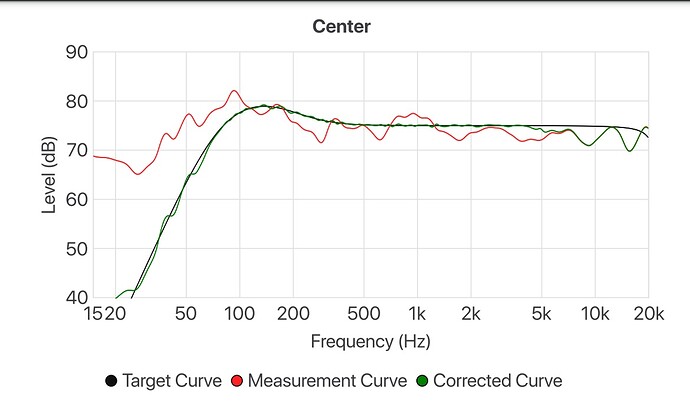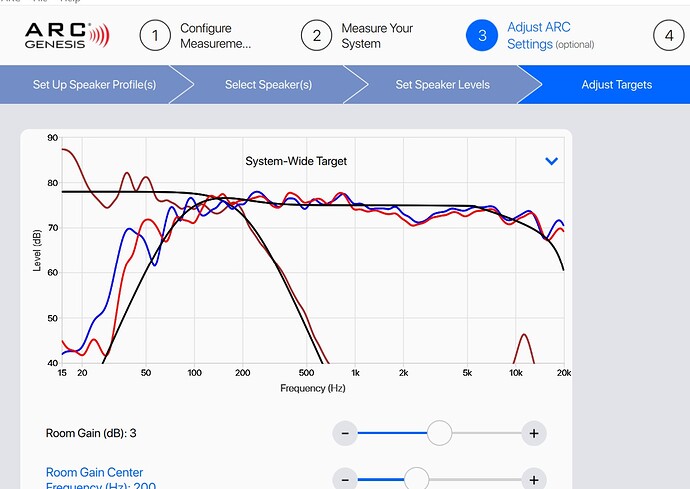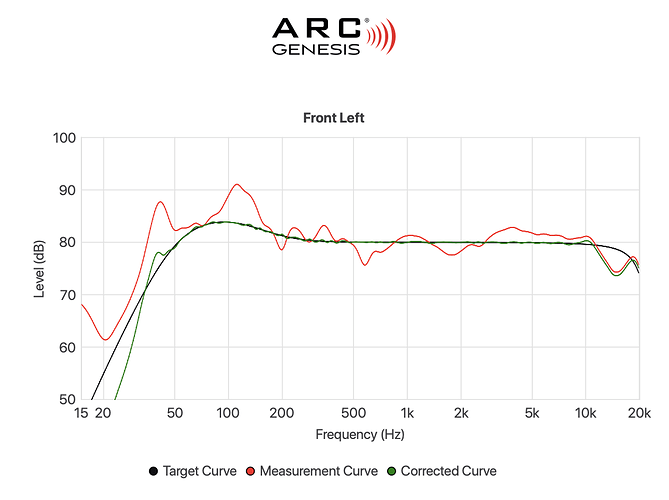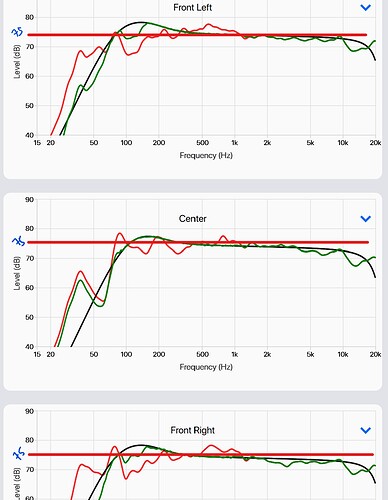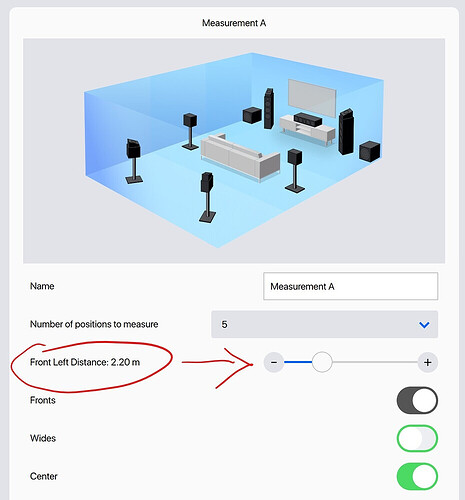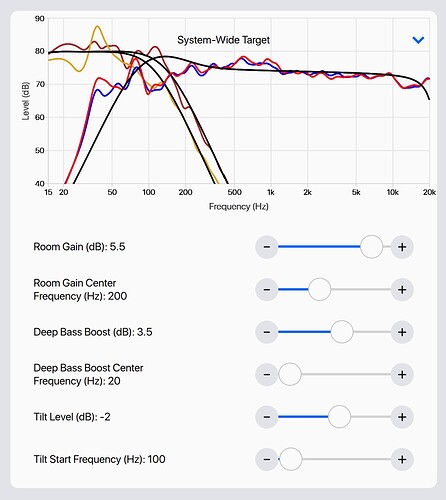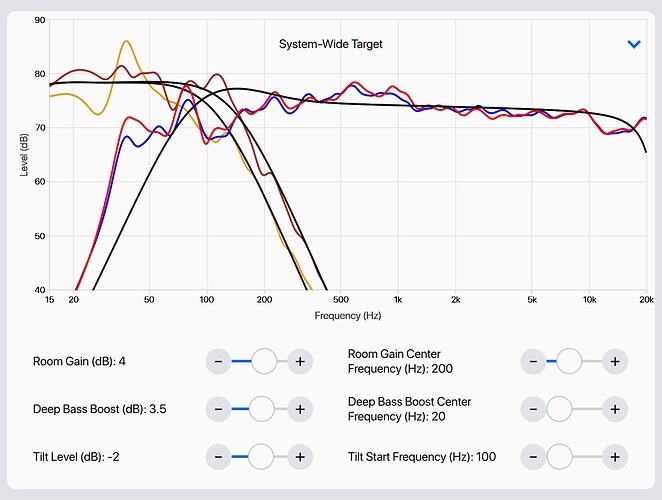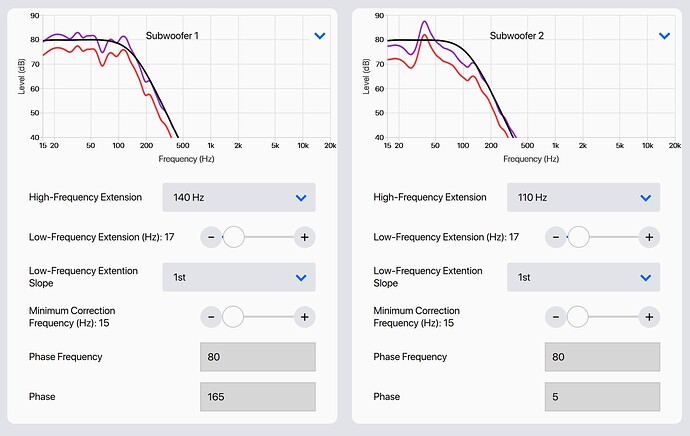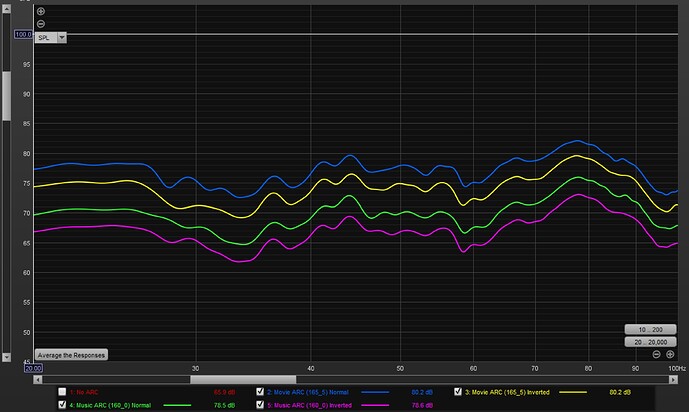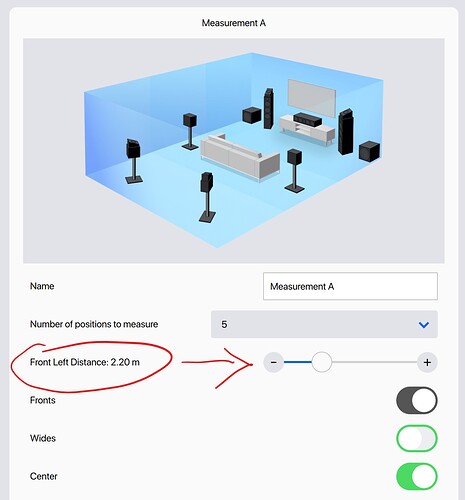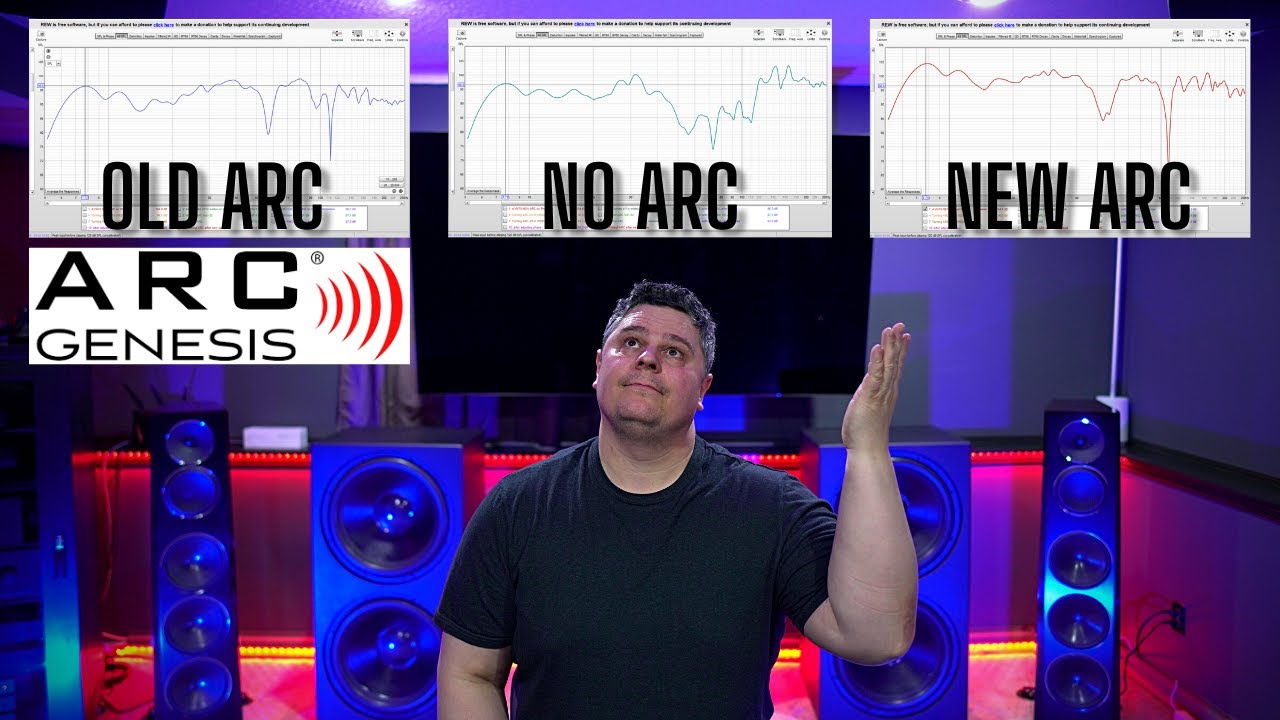Haha no lar… I’m clearing my leave as there are certain number of leave we need to clear by mid year. I will be in leave this Thur and Fri. After that, I will be quite busy with work.
thanks for sharing bro, this round of update seems more cosmetic…
Agreed…focus on what the user demand like actual speaker distance rather than delay distance. And more importantly to port some of the new improvements over to STR series.
Seems like there is another new beta firmware released back to back…the “missing” new beta is 1.6.10.
" We are pleased to announce the release of ARC Genesis Beta Version 1.6.10 , including the newly developed Anthem Auto Phase, Distance, and Time Alignment for up to four independent subwoofers on the MRX x40 and AVM 70/90 (model dependent), adding to the capabilities and further refining the already outstanding performance of ARC. With the addition of phase, distance, and time alignment, ARC:G will now precisely integrate subwoofers into your system for the ultimate immersive listening experience."
For now, if you click on the link ARC: Beta Downloads, you will see the beta is not yet made available to download. Not sure why but in case anyone interested, do keep your eyes on the page. ![]()
Download is back online for the latest Beta (v1.6.10)
Changelogs:
Version 1.6.10:
- STR: updated bundled fw to 1.8.30. Fixes an issue with using the latest Anthem Remote app beta; added support for automatic time alignment.
- STR: re-upload the stored auto phase results every time a save file is uploaded (if auto phase has been run). Brings the STR series to feature parity with the MRX x40 series
- MRX x40/AVM70/AVM90/STR: added ‘front left distance’ and units to measurement configuration screen; ARCG will use these to convert from relative distances to absolute distances
- MRX x40/AVM70/AVM90/STR: a warning will be displayed if the measured delay exceeds that which is supported by the target
- MRX x40/AVM70/AVM90/STR: display the speaker distance (relative/absolute) that would be uploaded to a device in the ‘levels’ page
- MRX x40/AVM70/AVM90/STR: if present, export to PDF now includes speaker distances and subwoofer phase values
- Additional release notes from 1.6.1 onward: MRX x40/AVM70/AVM90/STR: uploaded subwoofer level is reduced by 4/6/8 dB for systems with 2/3/4 mono subs respectively
- Various bug fixes and improvements
As I suspected, this is a minimal cosmetic change from v 1.6.9 as I don’t see much change compared to the previous version. But I guess its always better to get on the latest one.
Will redo my calibration and see what changes. Based on a cursory check, I can already see cosmetic changes to the ARC UI changes - e.g. selection of the imperial and metrics and specifying a physical distance for the front left speaker to be used as the primary speaker to measure physical distance (in ft/m). Phase will also added into the Adjust Target settings as well.
At one pt the ref level was 75dB… now it’s at 80dB.
Is there a way to set it at 75dB?
I very much prefer this as 80dB feel a bit loud,…
Which version of the beta are you using? I don’t see any change in the reference level.
If you chk back your posts before v1.6.5 you can see that too.
Look at this sample from an old chart - the target curve (black) is at 75dB instead of current version at 80dB
Based on the image you posted, it does indeed show the target curve (black) is at 80dB but for me, I have no such issue. See screenshot for the LCR. I’m using the latest v1.6.10.
I have been testing the latest ARC Genesis Beta (v1.6.10) since yesterday and I have to say, “color me impressed”! This is by far the most stable version I have had tested since the first release (v1.6.4) with auto phase alignment. If all things go well, I can see Anthem going to release a stable ARC Genesis pretty soon. Let’s dive deeper into why I say v1.6.10 is the best.
New feature: Implementation of physical distance
In this latest version, Anthem has added a new feature “front left distance” to allow physical distance to be calculated. Previously, it showed the acoustic delay (distance in ms) and it doesn’t go well with many users. This small change makes a lot of sense since most room EQ calibration s/w utilizes the absolute “physical” distance for measurement as opposed to the use of acoustic distance. It is easy to miss this feature, so do keep a lookout for it.
Note: However, there is still inconsistency in the way “unit of measurements” is displayed in the ARC Genesis software and the web UI. For instance, in the former, if you select “metric”, you will be shown “metre” but in the web UI, it still appears as “centimetre (cm)”. This is a minor issue bugbear I have with the unit of measurements. Still, I hope Anthem can fix it in the next release.
Biggest Improvement: Accurate phase alignment
In the last few beta releases, there were a couple of times I found the auto phase alignment to be a little wonky. When it works, it is great but you will never get a consistent outcome each time you do your phase alignment but this latest release finally nailed it! To test its consistency, I have deliberately made some “repeatable” changes to both the phase settings as well as the polarity on my physical subwoofers and with each changes made, I am able to get a consistent outcome this time. This isn’t the case for the past few releases. I have also learned that the changes in the System-Wide target settings such as Room Gain, Deep Bass Boost and Deep Bass Boost Centre will alter the phase readings but ARC is able to align the phase for each of the different profiles. For instance, I have 2 profiles. One for the movie and the other for music. The ONLY difference between the 2 profiles is the variation in the Room Gain (see image below):
Movie Profile
Music Profile
The reason why I have such a high deep bass boost was previously covered in my previous posts on how to create a “house curve”. One will have to tweak the subwoofer parameters like the one depicted below:
By making changes in the subwoofer parameters, you can make granular adjustments to the overall response to get the subwoofers to work in tandem in the crucial modal frequency range of 50hz to 20hz or lower. This is where the tactile feel of the LFE will kick in if you do it right. This can be easily achieved.
Note: A new addition in this latest release is the inclusion of the Phase Frequency and the Phase results under the “Adjust Target” settings. Do note that you are unable to modify those values but of course, one can use JSON formatter to make necessary changes to the .arc3 file. This is another topic for another day and if anyone is interested, I can show you how to do it.
Recalled when I talked about the need to invert the polarity in the web UI for the last few beta releases? This latest version FINALLY resolved it. Here’s a proof from the REW measurements which I took for the subwoofer response after ARC Genesis did the auto phase alignment.
The blue and the yellow curves depict my Movie Profile while the green and the magenta curves depict my Music Profile. Take a closer look at the legend below where you can see changes to the polarity (0 degree or 180 degree) will show the same characteristics and the SPL readings are spot on as you change the polarity between Normal and Inverted. Prior to this version, I have to manually invert the polarity switch in the web UI for my subwoofer 2 (JL Audio E110 with an inverted polarity) to get a good flat reading but now, this is no longer the case. Well done Anthem!!!
Misc Improvements in this latest release
- A much faster response when navigating through the ARC Genesis user interface.
- Less occurence of “critical audio error” during the calibration process. and
- Pink noise generated during the auto phase alignment process is now consistent without any abrupt jump in the SPL which gave many users a fright!
- More stable wi-fi connectivity is established between the mic and the MRX/AVM.
Comments
For those who are still using the stable version (v1.5.4), I strongly urge you to jump on the beta bandwagon and update to this latest beta release (v1.6.10), you will not regret it. It is very very stable with no issue. This is the version that I can wholeheartedly recommend it in a heart beat!
Seem like Anthem really listen to feedback from consumers.
That’s good news for Biggest Improvement: Accurate phase alignment
Btw did u time the estimated total calibration time for the 5 positions ? Say like 20mins? ![]()
Yes…thereabouts excluding the auto phase alignment part. The whole process will take about 45mins to nearly an hour if we include the REW verification part.
Thanks bro. Including the Phase Alignment should be up to 45mins. ![]() Plus the 5 different placement of the MIC positions haha.
Plus the 5 different placement of the MIC positions haha.
I can confidently tell you now that all you need to do is to perform the 5 mic locations (with varying heights) + the new auto phase adjustment and you are pretty much ok.
Some additional points that I forget to add for this new release. The new release will require you to upload the ARC file to the MRX/AVM first BEFORE you can perform an auto phase alignment. In the last few releases, you can do the phase correction and then perform the uploading of the ARC file to the MRX/AVM. In this new release, ARC Genesis will pop up a msg box reminding user to perform the upload of the ARC file first.
> IMPORTANT: PLEASE READ!!!
There is also another very crucial step to follow which is rarely covered by Anthem users. Make sure you do all the changes including crossovers, high-frequency filters, max correction range so on and forth in the ARC first BEFORE you do upload the ARC file to the AMRX/AVM. After that, you can go ahead to perform the auto phase alignment with great results. This is something that is very very important and makes a big difference in getting accurate and consistent phase readings.
Excellent work and great info, I just can’t work out why the distance measured is way off for me. My physical distance to fronts etc is 11ft 10" yet arc has used 7ft 10", very strange…
Maybe need to try again unless I have a beta bug issue…?
To my embarrassment I didn’t see that ![]() Does this now mean I will have to do a full calibration again desray?
Does this now mean I will have to do a full calibration again desray?
Thanks for your help on this by the way ![]()
Yes, pls redo the calibration. It should help with your case. As I’ve mentioned in my post, it is easily “missed” by user, so not really your fault.
